Photos: Carvings Depict Maya Ballplayers in Action
Ancient sports

Two large stone carvings, each the size of a breakfast table, depict an incredible action scene: Maya ballplayers lunging forward, wearing distinctive ballplayer belts.
Archaeologists discovered these two limestone monuments in Tipan Chen Uitz in 2015, just six years after locals showed them the remains of the enormous Maya polity, which had previously been undocumented by modern archaeologists.
The stone panels reinforce the ballgame's importance to the Maya, and details within them suggest that Tipan was connected with other, larger Maya sites when it was populated hundreds of years ago, the researchers said. [Read the full story about the Maya ballplayer panels]
Tipan Chen Uitz
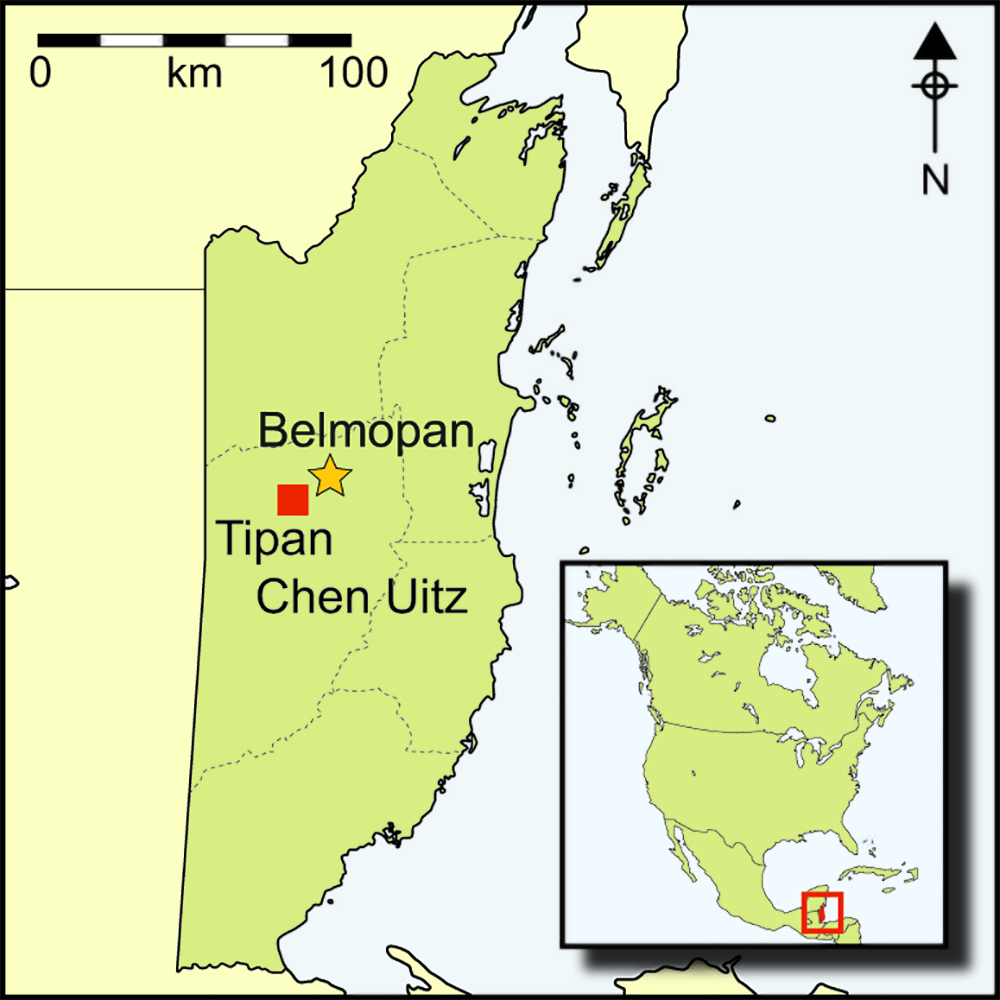
Archaeologists learned about Tipan Chen Uitz from locals in Belize who showed them the site in 2009.
"We were taken to the site, and lo and behold, it greatly exceeded our expectations," said study senior researcher Christopher Andres, an adjunct research associate at Michigan State University who specializes in Maya archaeology. "It's a very large site, a major Maya political center."
Maya palace
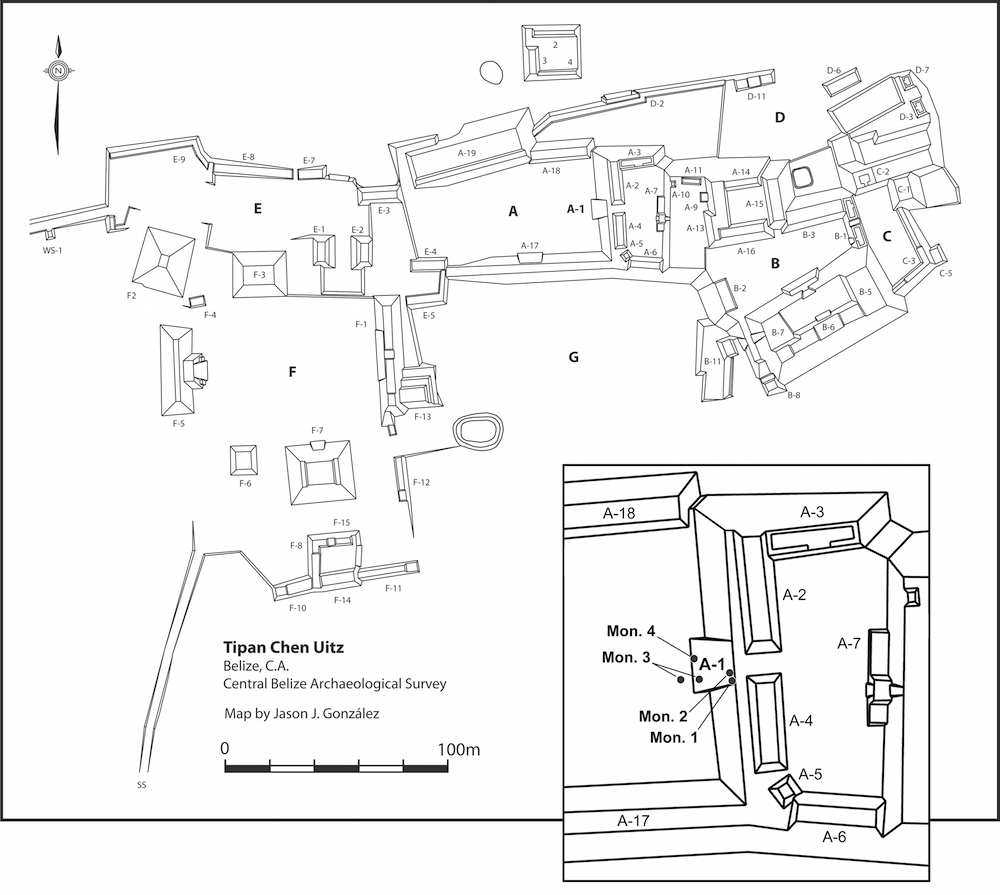
A map showing Tipan's monumental palace. The inset shows where the ballplayer panels (Monuments 3 and 4) were discovered by the archaeologists at structure A-1.
Monument hotspot
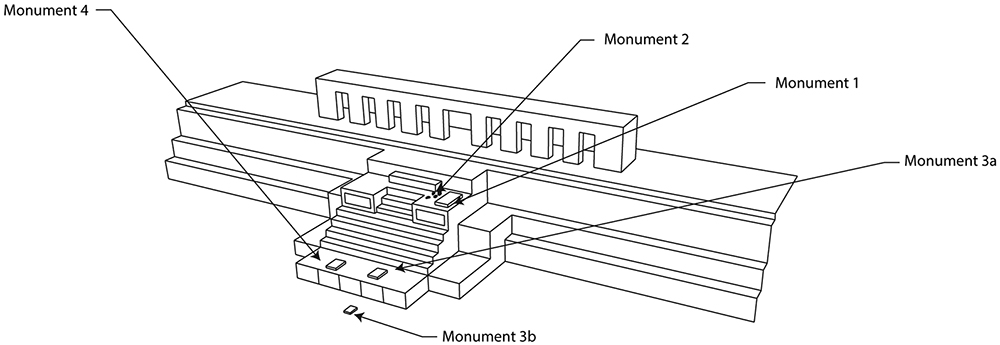
This illustration shows structure A-1 at Tipan. The arrows show where the archaeologists found Monument 4 and the two pieces of Monument 3. The monuments likely date to between A.D. 600 and A.D. 800.
The researchers previously described Monument 1 and Monument 2 in a 2014 study in the journal Latin American Antiquity and a 2015 study in the journal Mexicon.
Ancient stairs

The remains of the A-1 structure that were exposed during a 2015 excavation at Tipan.
Monument 3
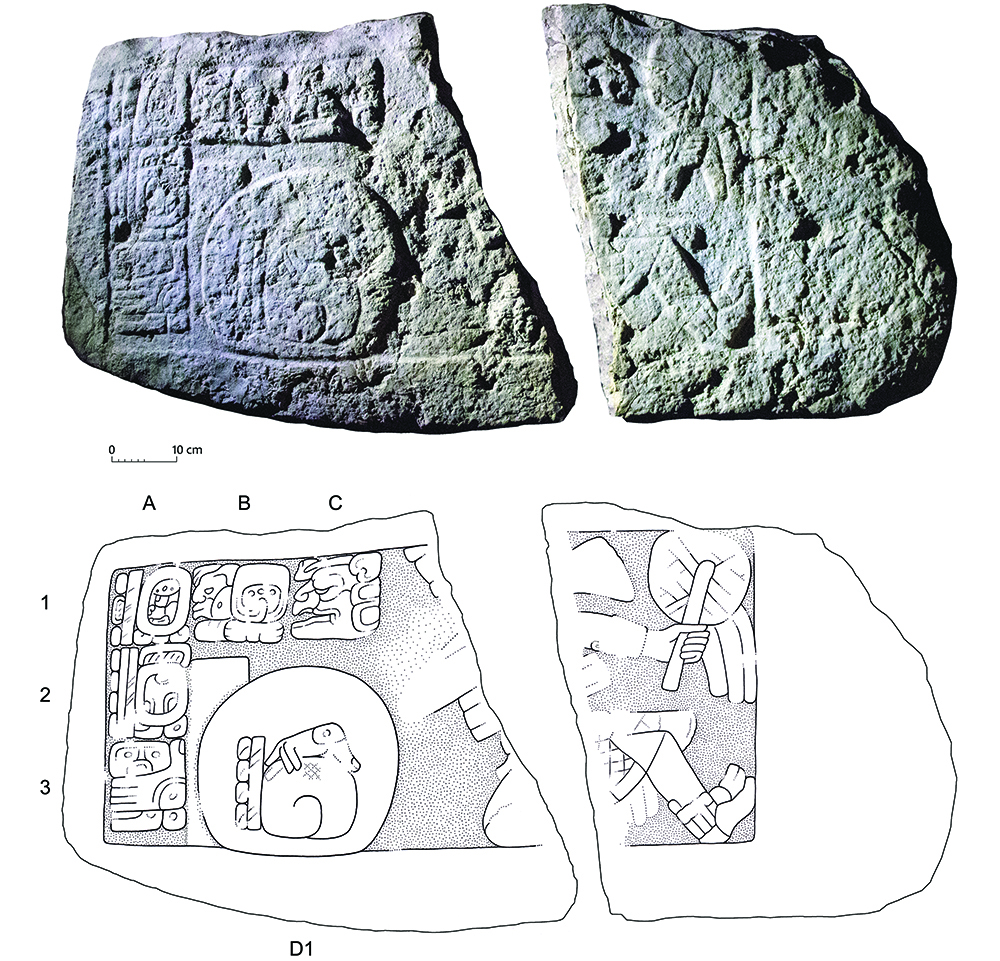
This photograph and drawling of Monument 3 show a ballplayer wearing an elaborate belt and holding an object with streamers, possibly a fan.
Monument 4
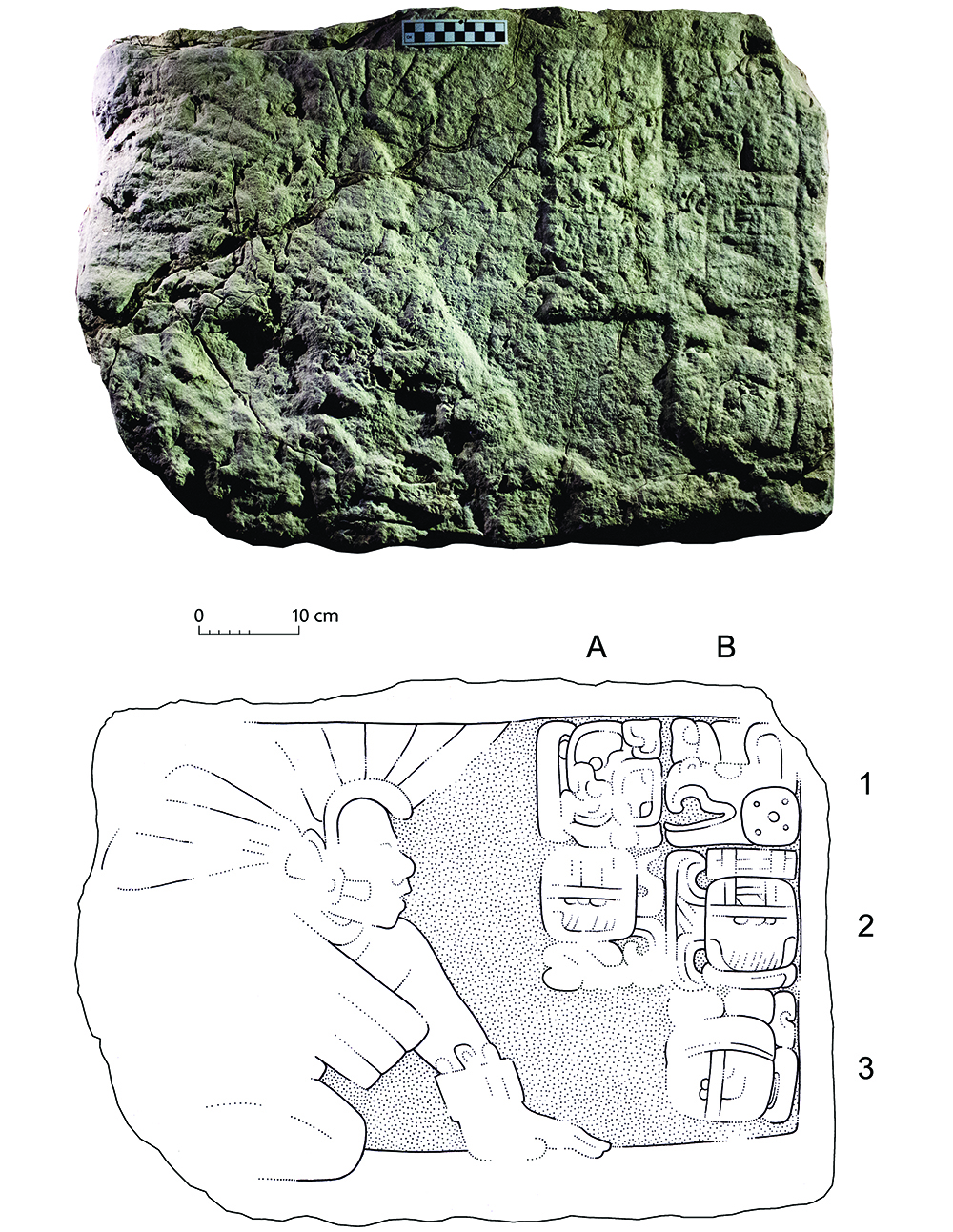
The carving on Monument 4, a limestone rock, shows a ballplayer wearing a large belt who is lunging forward. The ballplayer leans on his left hand, "as though attempting to strike a ball," the researchers wrote in the study.
Sign up for the Live Science daily newsletter now
Get the world’s most fascinating discoveries delivered straight to your inbox.
Archaeological area
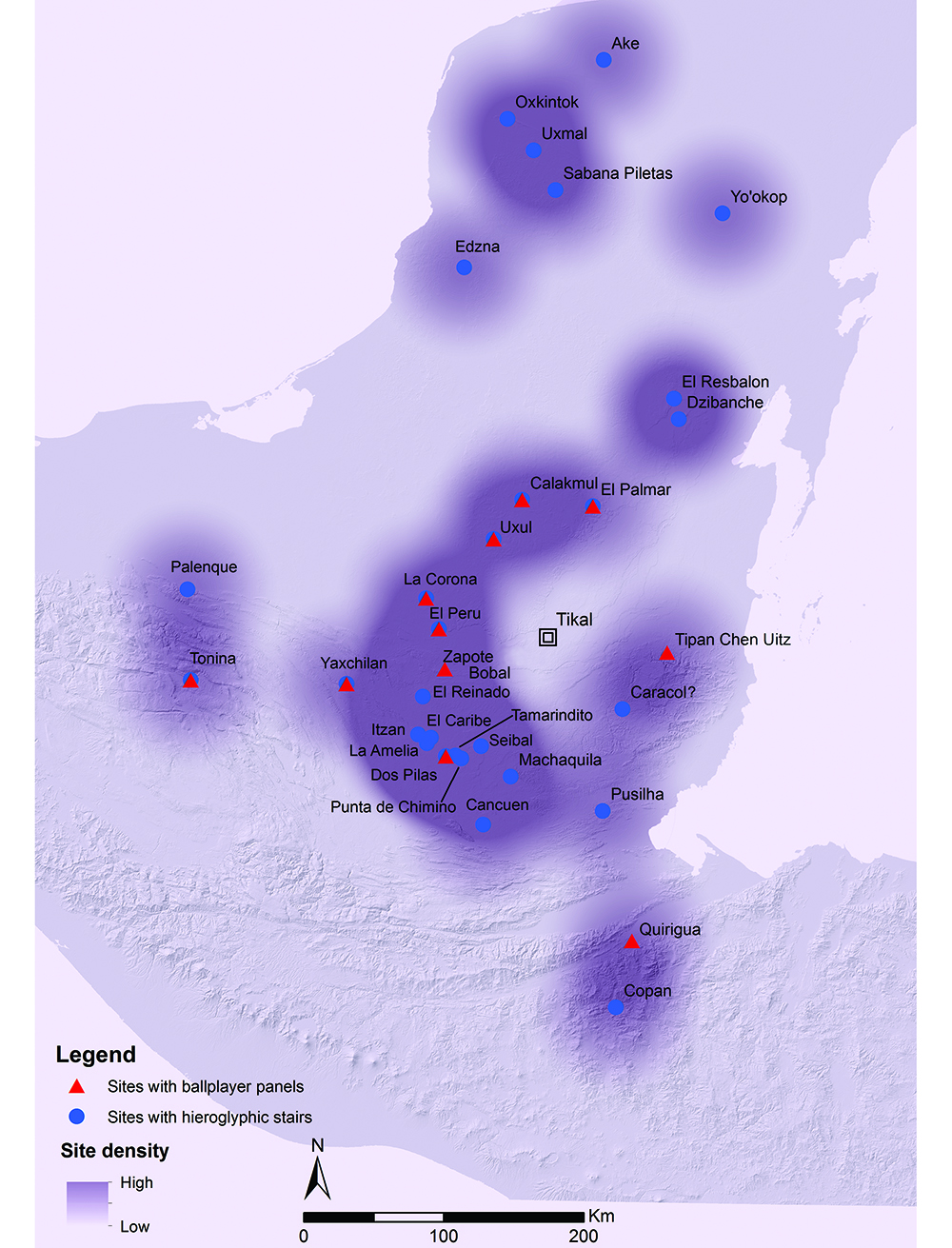
This map shows the distribution of archaeological sites in the Maya area. The blue dots indicate sites with hieroglyphic stairs, while the red dots show sites with ballplayer panels. Site density is shown with purple shading, the researchers said.
The ballplayer panels found at Tipan are the first of their kind to be uncovered in Belize, the researchers said.
[Read the full story about the Maya ballplayer panels]

Laura is the archaeology and Life's Little Mysteries editor at Live Science. She also reports on general science, including paleontology. Her work has appeared in The New York Times, Scholastic, Popular Science and Spectrum, a site on autism research. She has won multiple awards from the Society of Professional Journalists and the Washington Newspaper Publishers Association for her reporting at a weekly newspaper near Seattle. Laura holds a bachelor's degree in English literature and psychology from Washington University in St. Louis and a master's degree in science writing from NYU.









